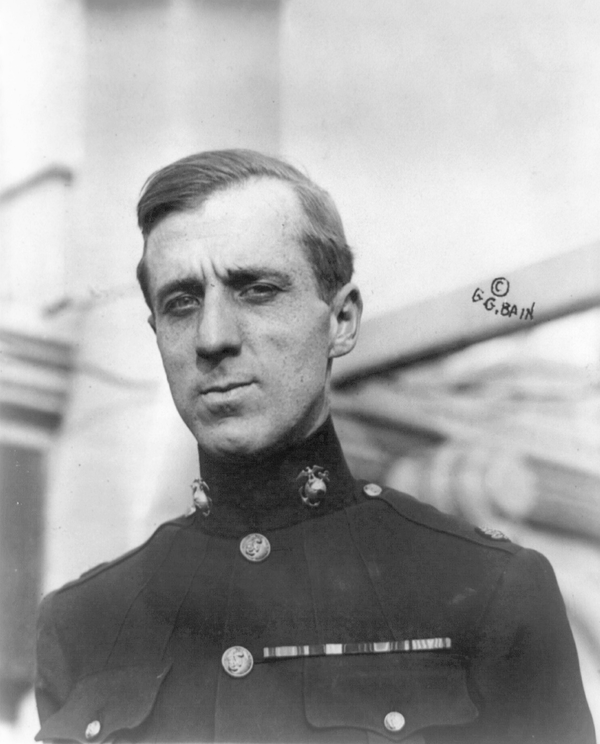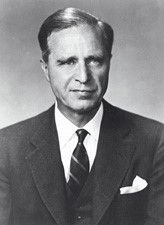On the economic roots of imperialism, Hilferding and 'the stability of capitalism'
NEWS & LETTERS, JULY 2003
From the Writings of Raya Dunayevskaya: Marxist-Humanist Archives
EDITOR'S NOTE
After the U.S. invasion and occupation of Iraq this year, revolutionaries are discussing imperialism in the age of state-capitalism and ways to challenge it. It is a central topic in the Draft for Marxist-Humanist Perspectives (see "II. State-capitalism and imperialism"). For that reason, we reprint part of a letter from Raya Dunayevskaya to C.L.R. James, of March 2, 1951. In it Dunayevskaya discusses, critically, the Marxist theories of imperialism in the first generation after Marx. The letter has been edited for publication and the title and notes are the editors'. The original is in THE RAYA DUNAYEVSKAYA COLLECTION, 9291-98.
* * *
We must now tie up the intelligentsia and the labor bureaucracy with the Plan. Thus far we have not done so concretely enough. We spoke of the Plan as the enemy, but we did not split the category of planners into a strict relation to the specific epoch for which they planned. We spoke of the labor bureaucracy as the same nature as Stalinism, both resulting from the stage of state-capitalism, but no internal connection flowed from all of this. Not in any truly concrete sense. So I will now split up that category [of] planners and see whether we can get closer to the internal logic.
With the end of classical political economy we have the first planner appearing in Jean Charles Leonard Sismondi. He tried to stop the march of industry, of constant capital outdistancing variable capital. Thus the doubts of bourgeois classicism got embodied in a bourgeois representative.(1)
The doubts grow with the “unconscious” development of capitalist production, and petty-bourgeois socialism appears--first in Pierre-Joseph Proudhon, with his BANK aid program, and then with Ferdinand Lassalle, with his demand for STATE aid to “cooperative production societies.”
The opposite of their intentions is thus clearly seen in their program, for in truth each tries to be a better bourgeois than the bourgeoisie itself--one by “abolishing” money but all wrapped up in the fetishism of commodities [Proudhon], the other by “extending” cooperation and all wrapped up with the fetishism of the state as some sort of classless arbiter [Lassalle].(2)
Proudhon is the last of the representatives of the epoch of competitive capitalism. Lassalle is the anticipator of monopoly capitalism (that’s really what HIS cooperative form of labor is), or more precisely yet, the statification of industry AND of life. Both are rejected by the further development of capitalism. With the transformation of competitive into monopoly capitalism, the BOURGEOISIE itself becomes the planners and the results of their planning are: trusts, international cartels, IMPERIALISM.
The new petty-bourgeoisie strata--which has also been transformed into its opposite, from the laisse-faire small grocery man into the ADMINISTRATIVE CLERK of the trusts--begins to ask for a saner “policy.” But these are much [less] dangerous than the Proudhons and Lassalles, for the very development of capitalism so engulfs them, they do not even know the “vocabulary” of the proletariat, and the latter does not listen to them at all.
The real danger comes from WITHIN scientific socialism--Rudolf Hilferding(3), the orthodox [Marxist], not Eduard Bernstein(4), the revisionist. Hilferding sees the new stage of capitalism in its financial razzle-dazzle appearance and becomes enamored of its capacity to “unify” commercial, industrial, and financial interests [instead of being] concretely aware of the greater contradictions and antagonisms of the new monopoly stage of capitalism.
I wish to stress the seeming orthodoxy of Hilferding. No one, absolutely no one--not the firebrand Rosa Luxemburg, nor the strict realist V.I. Lenin, and I dare say not Hilferding himself--knew that what he was doing with his theory of finance capitalism was bringing in the first theory of retrogressionism [into Marxism]....Even with over four decades of hindsight, and much, hard thinking on the subject, I have first now realized that what Hilferding was SEEING and analyzing (and it took Nikolai Bukharin’s theory of the transition period to bring it home to me)(5) was the STABILITY OF CAPITALISM.
Watch the orthodoxy though: Hilferding is proposing no revisionism. The automatic fall of capitalism is still expected and the inevitability of socialism in a mechanistic sort of way is also held to tightly. BUT rather than seeing monopoly as a transition into opposite of a previous stage, monopoly is treated more like simple large-scale production. THAT IS THE KEY. For if it is not a transition into opposite of a fundamental attribute of capitalism, then CAPITALISM’S ORGANIZATION and centralization, monopolization’s appearance as the “emergence of SOCIAL control”...is in fact superseded socialism. Or more precisely, [Hilferding] retrogresses back to home base: the equilibrium of capitalist production.
By viewing the whole development of trusts and cartels not from within the factory, but from “society,” that is, the market, Marx’s general law of capitalist accumulation--the DEGRADATION of the proletariat along with capitalist accumulation--has no meaning for Hilferding. Neither does Marx’s postulate “private production without the control of private property” make any imprint on Hilferding.(6) And of course labor remains a unity; there is not any inkling of an aristocracy of labor arising out of the monopolization and degradation and imperialism.
You must remember that even with the outbreak of World War I, but before Lenin did his own analysis [of imperialism in 1915], he introduced Bukharin’s WORLD ECONOMY AND IMPERIALISM which said pretty much the same thing as Hilferding. All this I want to repeat again and again in order to emphasize the orthodoxy, in order to show that [even when] all the formulae are adhered to the loss of revolutionary perspective not yet in a positive way but in the negative of awe before the EXISTENT, continued capitalism can be very, very deceiving. If it was [deceiving] to Lenin we better watch it all the time.
What in truth emerges from a close study of Hilferding...is that the new generation of Marxists following Engels’ death [in 1895], placed within growing, centralized production, SAW MONOPOLY NOT AS A FETER BUT RATHER AS AN ORGANIZING FORCE OF PRODUCTION. So that the Second International, which had openly rejected Bernsteinism and gradualness, accepted Hilferdingism. That meant tacit acceptance of the capacity of capital to gain a certain “stability,” to modify its anarchism as a “constant” feature. They saw in [this] new stage not a TRANSITION to a higher form, but something in itself already higher, although “bad.”
Now the person who made this all clear to me was Bukharin, that logical extension of Hilferding, blown into the THEORY of counter-revolution right within the first workers’ state. It is to him that we must turn. Here too for our generation it is correct to view him with hindsight, precisely because his is “only” theory that will become full-blown actual counter-revolution with Stalin supplying it an objective base.
Keep in mind therefore the three actual stages of capitalist production for the three decades since the publication of Bukharin’s ECONOMICS OF THE TRANSITIONAL PERIOD:
l) 1920-30: Taylorism plus Fordism, that is, the discovery of the [assembly] belt line and with it the necessity for a fascistic order in the factory. It may be “vulgar” to call gangsters part of the intelligentsia, but that is the genuine face of “social control” when the masses themselves do not control [production]. Marx’s view of the planned despotism plus the industrial ARMY of managers, foreman, etc. has moved from theory to such EVERYDAY practice that every worker knows it in his bones; he needs no ghost come from the grave to tell him THAT....
2) 1930-40: General crisis; New Dealism where “everybody” allegedly administers, and fascism where openly only the elite do, both in mortal combat with the CIO and the general sit-down strikes (which made a true joke of private property) for “social control.” Plan, plan, plans: National Five-Year Plans in Russia, Germany, Japan; John Maynard Keynes, the New Deal, technocracy, the Tennessee Valley Authority, public works.
3) 1940-50: Monopolization has been transformed into its opposite, statification. (What greater scope for a modern Moliere, to take those weighty volumes of the Temporary National Economic Committee (TNEC)(7) proving monopolization and how strangling it is, and then on the eve of World War II they are finally published in full, prefaced by a call for full mobilization which shows that monopolization plus Hitlerism is child’s play as compared to American statification.)
End of World War II, “end” of fascism and state-private-monopoly rule. Complete state-capitalism reaching its tentacles from Russia into Eastern Europe, engulfing Britain, seeping into Western Europe and peering out of the U.S. TOTAL, GLOBAL PLANS: Marshall, Molotov, Monnet, Schumann, Truman’s Point 4.(8) Keynes is dead; long live the state plan. The intelligentsia in Russia, the Social Democratic labor bureaucracy elsewhere, all in mortal combat with the Resistance, with the Warsaw [uprising](9), with general strikes and colonial revolutions. One strangles the revolution “for” the masses’ own good, and the other for “democracy’s” shadow.
NOTES
1. Jean Charles Leonard Sismondi (1773-1842) was an early critic of industrialism. His NEW PRINCIPLES OF POLICTICAL ECONOMY (1819) proposed state regulation of the economy in order to create a balance between production and consumption. Karl Marx made critical notes on Sismondi in 1844.
2. For more on Proudhon (1809-65), a founder of anarchism, and on Lassalle (1825-69), whom Marx called a future worker’s dictator, and several others noted here, see Dunayevskaya’s MARXISM AND FREEDOM, FROM 1776 UNTIL TODAY.
3. Rudolf Hilferding (1877-1941) was a leading theoretician of the “orthodox Marxist” Second International. He is best known for FINANCE CAPITAL, which argued that the influence of banks over industry led to monopolies and consequently to imperialism. He opposed the German Social-Democrats’ vote for war credits in 1914, though he took a centrist position as a leader of the Independent Social-Democratic Party. In 1923 and 1928 he served as Finance Minister in two German Social-Democratic governments. He was murdered by the Nazis in Paris in 1941.
4. Eduard Bernstein (1850-1932) was the founder of revisionist Marxism who rejected the notion of the inevitable collapse of capitalism and the seizure of power by the proletariat.
5. Nikolai Bukharin (1888-1938) was a leading theoretician of the Russian Bolsheviks. He wrote ECONOMICS OF THE TRANSITIONAL PERIOD in 1920. Though Stalin utilized some of ideas in his rise to power, Bukharin was executed on Stalin’s orders in 1938.
6. This is probably a paraphrase of Marx’s comment that the concentration and centralization of capital leads to “the abolition of the capitalist mode of production within the mode of capitalism itself....It is private production unchecked by private ownership” See CAPITAL, Vol. III, trans. by David Fernbach (New York: Vintage, 1981), p. 569.
7. The Temporary National Economic Committee (TNEC) reports were a series of studies commissioned by Congress which studied the concentration of economic power in the U.S. economy.
8. General George Marshall was the U.S. Secretary of State under Truman who devised the Marshall Plan for the recovery of Europe after World War II. V. M. Molotov (1890-1986) was Soviet Foreign Minister from 1939-49 and 1953-56. Jean Monnet (1888-1979) headed French economic planning after World War II and was a guiding force in the creation of the European Common Market, the precursor of the European Union. Robert Schumann (1886-1963), French Foreign Minister during the late 1940s and early 1950s, devised the Schumann Plan in 1950 to place French and German coal and steel production under a single joint authority. This later became the foundation of the Common Market. Truman’s Point 4, unveiled in 1949, was an effort to “combat Communism” by promising aid to underdeveloped nations.
9. This refers to the Polish uprising against the Nazis in Warsaw in 1944. Though the Russian army was outside Warsaw at the time, Stalin refused to extend any aid to the uprising and allowed the Nazis to crush it.
|









